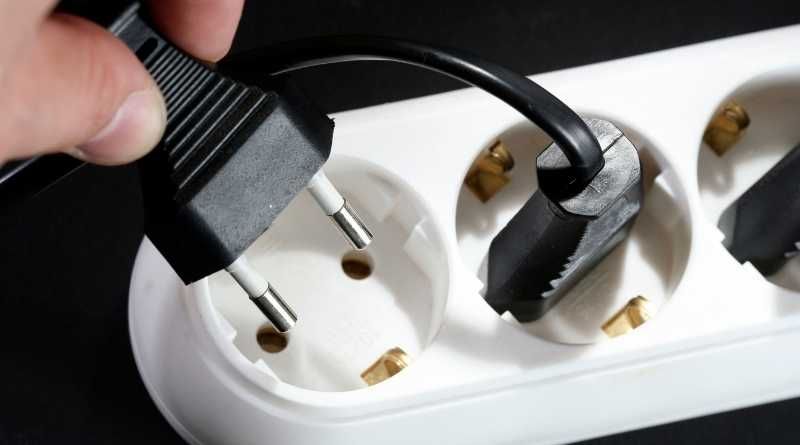Are you tired of seeing that unsightly surge protector cluttering up your home office space? You've heard the theory that there are clever ways to hide it, but you're not quite sure where to start.
Well, fear not! We've got you covered with 5 ingenious methods to conceal your home office surge protector.
From behind furniture to under desk mounting, these tricks will have your space looking sleek and organized in no time.
Let's dive into these clever solutions and master the art of hiding that pesky surge protector once and for all.
Key Takeaways
- Concealing behind furniture is a great way to keep the surge protector out of sight and free up desk space.
- Creating a DIY charging station using a wooden desk organizer or storage box can help disguise clutter and organize cords.
- Using a cable management box can save floor space and improve the aesthetics of your workspace while efficiently housing a power strip.
- Floating shelf concealment allows you to keep the surge protector off the floor and out of sight, creating a tidy and clutter-free workspace.
Behind Furniture
Hide your home office surge protector behind furniture to keep it out of sight and free up space on your desk. This creative solution not only declutters your workspace but also ensures easy access to power outlets. Consider integrating the surge protector behind a bookshelf, cabinet, or desk, where it remains within reach yet remains hidden from plain view. By doing so, you can disguise the clutter of wall outlets and cables, providing a clean and organized appearance to your home office.
One way to achieve this is by using furniture with built-in compartments or shelves. You can strategically place the surge protector inside these compartments, allowing for seamless integration and easy access. Additionally, consider using furniture with openings at the back, enabling hidden power strips and cables to run through without being visible from the front. This approach not only maintains a neat and professional look but also ensures that your home office remains functional and efficient.
DIY Charging Station
Create a practical DIY charging station for your home office to keep your devices organized and easily accessible.
Start by repurposing a wooden desk organizer or a multi-compartment storage box to hold your chargers. Use cable clips or zip ties to manage cord organization by attaching them to the inside of the organizer, ensuring that each charger has its own designated space. This creative storage solution not only keeps your cords tangle-free but also prevents them from cluttering your workspace.
To further enhance your DIY charging station, consider adding a power strip inside the organizer. This allows you to plug in multiple chargers without creating a mess of cords. Additionally, you can label each cord with the name of the device it charges to easily identify them.
For a sleek and seamless look, choose a desk organizer that matches your office decor or paint it to complement your space.
Cable Management Box
To further organize your home office space, consider incorporating a cable management box to neatly conceal and manage the various cords and cables connected to your devices. A cable management box provides a tidy solution for cord organization, keeping your workspace looking clean and professional.
Here are some cable management tips to help you make the most of this hidden power strip:
- Wall Mounted Solution: Opt for a cable management box that can be easily mounted on the wall, keeping it off the floor and out of sight. This not only helps in organizing the cables but also frees up valuable floor space in your home office.
- Cord Organization: Use the cable management box to neatly bundle and organize the cords and cables from your devices, preventing them from tangling and creating a cluttered workspace. This won't only improve the aesthetics of your home office but also make it easier to locate specific cords when needed.
- Hidden Power Strip: Choose a cable management box that can discreetly house a power strip, allowing you to keep all your devices plugged in and powered while maintaining a clean and uncluttered appearance. This hidden power strip solution helps to streamline your home office setup, creating a more efficient and visually appealing workspace.
Floating Shelf Concealment
Mount the surge protector on a floating shelf to cleverly conceal it while maintaining easy access to power sources in your home office. Floating shelves provide a sleek and modern organizational solution for hiding a power strip in plain sight. By attaching the surge protector to the underside of the shelf, you can keep it off the floor and out of sight, while still being able to plug in all your essential devices. This floating shelf organization not only hides the power strip effectively but also creates a tidy and clutter-free workspace.
To execute this hidden power strip setup, select a floating shelf that complements your home office decor and is wide enough to accommodate the surge protector. Secure the shelf to the wall at an appropriate height for easy access. Then, attach the surge protector to the underside of the shelf using screws or adhesive strips, ensuring it's easily reachable while remaining concealed.
This clever concealment method not only keeps your home office looking neat and organized but also ensures that your devices remain powered without the unsightly appearance of a visible power strip.
Under Desk Mounting
How can you effectively conceal your home office surge protector while maintaining easy access to power sources? Under desk mounting provides a practical solution for hiding your surge protector and organizing cables while keeping them within reach.
Here are three key strategies for achieving a sleek and clutter-free home office setup:
- Wall mounted solution: Consider attaching a surge protector underneath your desk or to the wall using mounting brackets. This not only hides the power strip from plain sight but also frees up valuable desk space for your work essentials.
- Cable organization: Utilize cable management tools such as cable clips or velcro straps to keep the cords neatly bundled and out of the way. Neatly organized cables contribute to a clean and professional workspace while reducing the risk of tripping hazards.
- Power strip placement: Mount the surge protector in a convenient location under your desk to minimize desk clutter. This placement ensures that your devices remain powered while the unsightly tangle of cords stays hidden from view.
Frequently Asked Questions
How Can I Ensure That My Surge Protector Is Protected From Accidental Spills or Water Damage?
To protect your surge protector from water damage and spills, place it in a waterproof container or use a surge protector with built-in spill protection. Keep it elevated to prevent direct contact with liquids and consider using cable management to minimize potential hazards.
Are There Any Safety Concerns With Hiding My Surge Protector in These Clever Ways?
Hiding your surge protector can pose safety concerns. Ensure proper surge protector placement to avoid fire hazards. Manage cords to prevent tripping hazards and potential damage. Always prioritize safety when concealing your surge protector.
What Should I Do if I Need to Access the Surge Protector for Maintenance or to Reset It?
To access and reset your surge protector, simply remove any concealment and locate the device. Unplug it from the power source, wait a few minutes, then plug it back in. This will reset the surge protector and ensure proper functionality.
Can I Use These Methods to Hide Multiple Surge Protectors in Different Areas of My Home Office?
Yes, you can use these methods to hide multiple surge protectors in different areas of your home office. Implement cable management and organization techniques while considering interior design and decor to effectively conceal and streamline multiple surge protectors.
Will Hiding My Surge Protector in These Ways Affect Its Ability to Dissipate Heat and Prevent Overheating?
Hiding your surge protector in clever ways can impact its ability to dissipate heat and maintain proper surge protector maintenance. Ensure proper ventilation and avoid covering it with materials that obstruct heat dissipation.


